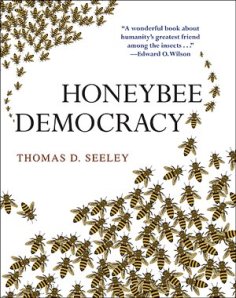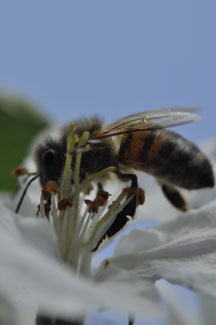We have announced our 2013 spring bee guardianship classes in Colorado!
We are excited to offer beginner, intermediate and advanced classes in
Boulder, Fort Collins, Carbondale, and Paonia.
You can register for the classes and find out more information,
at BackYardHive.com
Tag Archives: backyardhive
WikiNews: Honey bee decline spreading globally
I like the precise and direct information about our WORLD honey bee collapse as stated by the United Nations Environment Programme scientists. Read on!
Saturday, March 12, 2011
Scientists working for the United Nations Environment Programme (UNEP) reported Thurdsay that the collapse of honey bee colonies is becoming a world wide phenomena and will continue unless humans work to restore habitats for bees. The insects are necessary for pollinating crops and the report calls for profound changes in how humans manage the planet. The decline in managed bee colonies, first noticed in Europe and the U.S., is now seen in China and Japan, and there are signs of colony collapses in Egypt. According to the U.S. Department of Agriculture, honey-producing colonies in the U.S. have declined from 5.5 million colonies in 1950 to 2.5 million in 2007. A co-author of the report, Peter Neumann, said changes in rural areas during the past 50 years have contributed to decline of wild bees and other pollinators. Additional factors include the declines in flowering plants, the use of harmful chemicals and insecticides, the increase in air pollution and a worldwide trade system that spreads bee pathogens and pests.
The world’s growing population means more bees are needed to pollinate the crops to feed more people. According to the U.N. report, of the 100 crop species that supply 90 percent of the world’s food, bees pollinate more than 70 percent. Noting that humans seem to believe that they can operate independent of nature through technological innovations, Achim Steiner, the executive director of the UNEP said, “Bees underline the reality that we are more, not less dependent on nature’s services in a world of close to 7 billion people.”
The report calls for such measures as incentives for farmers and land owners to encourage them to restore habitats that are friendly to pollinators.
Michael McCarthy “Honey bee decline now global phenomenon” — Independent Online, March 10, 2011
…collapse of honey-bee colonies is becoming a global phenomenon, scientists working for the United Nations have revealed.
Declines in managed bee colonies, seen increasingly in Europe and the US in the past decade, are also now being observed in China and Japan and there are the first signs of African collapses from Egypt, according to the report from the United Nations Environment Programme (UNEP).
“The way humanity manages or mismanages its nature-based assets, including pollinators, will in part define our collective future in the 21st century,” said Achim Steiner, UN Under-Secretary-General and UNEP Executive Director.
The Associated Press “World’s bee hives to decline without human changes” — Las Vegas Sun, March 10, 2011
“Human beings have fabricated the illusion that in the 21st century they have the technological prowess to be independent of nature,” said Achim Steiner, the executive director of the U.N.’s environmental program. “Bees underline the reality that we are more, not less dependent on nature’s services in a world of close to 7 billion people.”
The bees are needed to pollinate crops that feed the world’s growing population. Of the 100 crop species that provide 90 percent of the world’s food, more than 70 are pollinated by bees, the U.N. report said.
Filed under Events and Press
Vanishing of the Bees film showing in Boulder

Where: Boulder Public Library
1000 Canyon Blvd., Boulder, CO 80302
When: Oct 27th -Wednesday
Time: 6pm doors open,
Film Starts: 6:30pm promptly
Cost: $10 donation
Why: Because we LOVE the bees!
http://www.vanishingbees.com/trailer/
All admission fees go directly back to
supporting the honeybees through a public outreach program
to bring awareness to pesticide spraying (residential
and commercial) that is adversely effecting the bees.
Filed under Events and Press
















